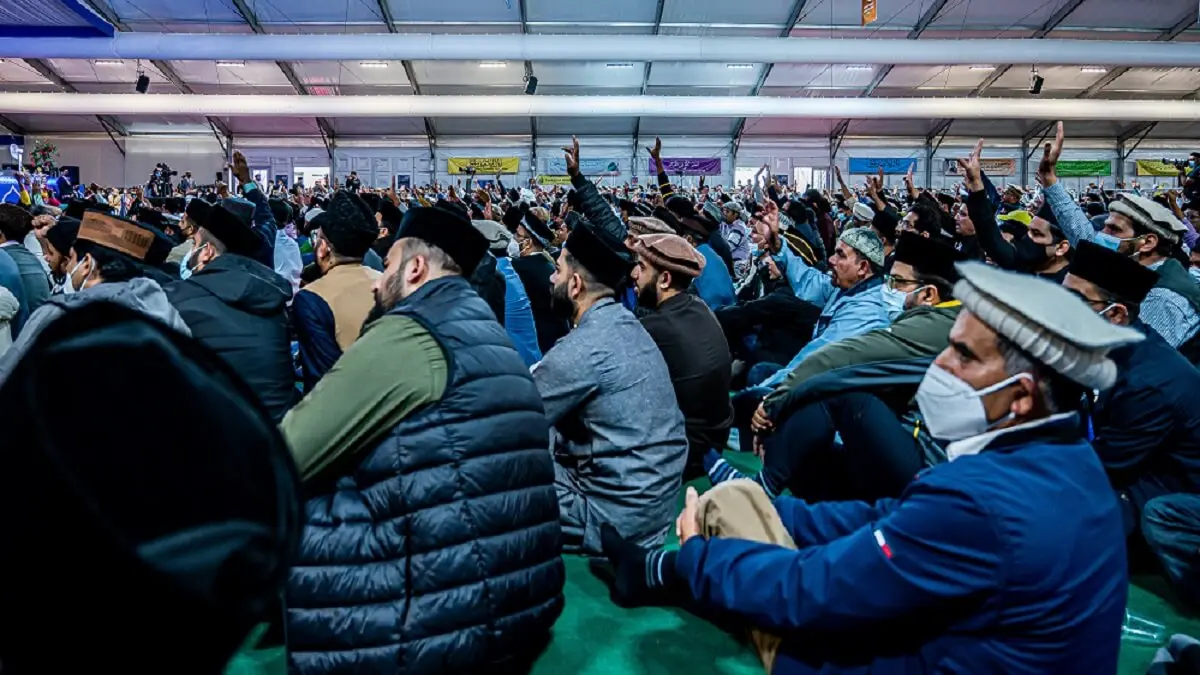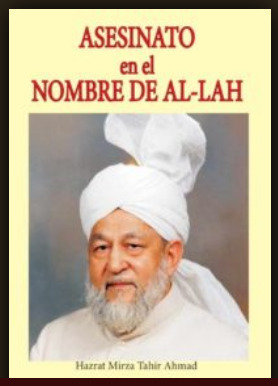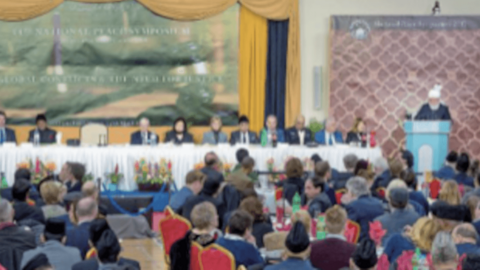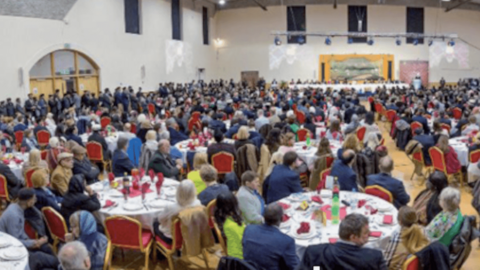Does religion spill blood (III)?

(Excerpt from the book ‘Murder in the Name of God’ by Hazrat Mirza Tahir Ahmad, 4th Supreme Khalifa of the Ahmadiyya International Community of Islam)
[This installment is a continuation of the previous one: RELIGION SPILLS BLOOD (II)].
Again, in Chapter 39 of the Quran the Prophet (lpbD) is asked to say to the unbelievers: ‘It is Al'lah Whom I worship, being sincere’. Now as far as you are concerned, ‘So worship what you will besides Him’ (39.16).

Since freedom of conscience, freedom to believe and preach is the cornerstone of religion, and the suppression of religious heresy is the goal of anti-religious forces, The Quran places great emphasis on freedom of conversion. The last line of Chapter 109 of The Quran sums up the basic principle of a true religion. ‘To you your religion and to me my religion’. In an earlier passage (10-100) God refers to the same principle by asking a rhetorical question. Addressing the Holy Prophet (lpbD), He says: ‘But if your Lord had imposed His will, verily all who are on earth would have believed together. Will you therefore compel men to become believers?’ In the plan of creation man has to have free and complete agency to believe or to think otherwise. There is no compulsion; a man must use his reason and his understanding. After all faith is a gift of God to those whom He thinks worthy of it.
In medieval Europe, the so-called followers of Christ (lpD), popes, prelates, cardinals, canons and church dignitaries, wrote a chapter of terror in the history books. St. Augustine called it ‘the just persecution which the Church of Christ inflicts on the ungodly’ (1). Christian historians today admit that this ‘just persecution’ inflicted in the name of Christ (lpD) was a disgrace for the Church.
The Madame Tussaud's wax museum in London has a strange, moving and terrifying exhibition of this persecution. The museum was originally founded in Paris in 1770 and moved to England in 1802. Its walls are lined with wax figures of famous and infamous people. Its Chamber of Horrors is a kind of underground dungeon. The figures are modelled with such terrifying realism that you can almost see them breathing. Many visitors have stopped to ask a friendly-looking guard for instructions only to find they were talking to his imitation! On display are masks of the guillotined heads of Louis XVI and Marie Antoinette, which were personally modelled by Madame Tussaud. There is a real gallows, rack, galleys, Procrustean bed, crosses, gibbet, gallows, hangman's rope and many others. Some of the exhibits are so gruesome that they are protected by screens to keep them away from children and scrupulous adults.
It is a strange world where a man can rise to the heights bestowed on the prophets and speak to his Creator and then plunge into the depths of a priest and question Joan of Arc about her visions of angels. He can even dive deeper and become an inquisitor. The instruments of torture displayed in Madame Tussaud's museum tell the tragic story of the Spanish and French Inquisitions. Innocent people were tortured for their so-called apostasy; they were forced to confess that they had renounced the true religion. When they refused, they were flogged and whipped, put on the rack, lynched, impaled, pilloried, branded with hot irons and burned. The victims either confessed or died a miserable death. These dignitaries of the Church who, with all refinement, tortured innocent Christians, remind us of Christ (lpD) with his crown of thorns bleeding on the Cross and crying aloud: ‘Eli, Eli, lama sabachthani’ (Matthew 27:46). These were the ones who symbolically consumed the body and blood of Christ (lpD) in communion, although they could not remember that the Pharisees had asked Pontius Pilate to crucify Christ (lpD) because he was an ‘apostate’ and had forsaken the religion of his forefathers. But the crucifixion of Christ (lpD) pales into insignificance when compared to the Inquisition of medieval Christians. Islam, with its claim of ‘non-compulsion in matters of faith’, feels the relief and pride of having finally closed the door on such atrocities committed in the name of religion. But this feeling of relief and pride is short-lived. Any Muslim will hide his head in shame when he sees today's ‘ulema’ emulating the Christian priests of medieval Europe when they invented new ways of suppressing freedom of thought and conscience. And yet these are the same ‘ulema’ who claim to protect the honour of the Holy Prophet (lpbD) whom the Holy Quran describes as a ‘clemency for the universe’.
These ‘ulema’ believe themselves to be the embodiment of mercy, but their hearts are devoid of compassion. On the contrary, they are filled with hatred. The use of force in the name of religion has now become part of their faith. In the name of God's holy water, sent to cool our wrath, they kindle the fires of hatred and anger in the hearts of the innocent. The followers of the Prince of Peace (lpbD) whose blood purified barbarous Arabia, are being persuaded to murder defenceless people. In the name of the protector of the helpless poor, his followers are encouraged to rob the homes of those who are powerless to defend themselves. In the name of the Prophet (lpbD) who protected the honour even of women from ruffians, the happy and loving marriages of Muslim women are annulled and transformed into adulterous relationships. In the name of the builder of the first mosque in Medina, who offered it to the Christians of Nallran for Sunday services, and in the name of the Prophet (lpbD), who taught his followers to respect the centres of other faiths, today's ‘ulema’ incite the masses to destroy the mosques of a small group of people whose lives are dedicated to spreading the ‘shahada’ (the declaration of faith). What would the Holy Prophet (lpbD) think if he could see the ‘ulema’ of his ‘umma’ falsely accusing the dignitaries of other Muslim groups of all kinds of crimes and cheering the abuses of women and housewives? How would an agnostic react to such a display of ‘religious fervour’? What Muslim would think for a moment that our Prophet (lpbD) would have advised the ‘ulema’ of his ‘umma’ to deliver provocative and destructive harangues; or that he would have ordered them to deliver such furious sermons that entire villages of poor and destitute people would be burnt down? Not satisfied with all this, could the Prince of Peace (lpbD) have told religious leaders to treat as apostates those Muslims whose understanding of Islam did not coincide with his own? Would he have authorised the killing of them and their wives and the destruction of their mosques as the only divine way to erase apostasy?
These are the questions we should all seriously reflect upon. Muslims should consider the attitude of these ‘ulema’ since repression, torture, execution, burning and demolition of mosques are not the tradition of the Prophet (lpbD). Every stone in the streets of Mecca on which the so-called apostates were dragged bears witness to this. Likewise, every grain of burning sand in Arabia where defenceless people were tortured for accepting Islam. The pebbles of Taif, where the blood of the Holy Prophet (lpbD) was shed, bear witness to the fact that our great Master, mercifully, did not teach that religious belief was obligatory and did not order the burning of houses of worship in the name of worship, or dishonouring women in the name of honour. Muslims bow their heads in shame and their souls cry out over today's religious leaders who preach violence in the name of the Prophet (lpbD).
(lpbD) - peace and blessings of God be upon him.
(lpbD) - peace be upon him.




